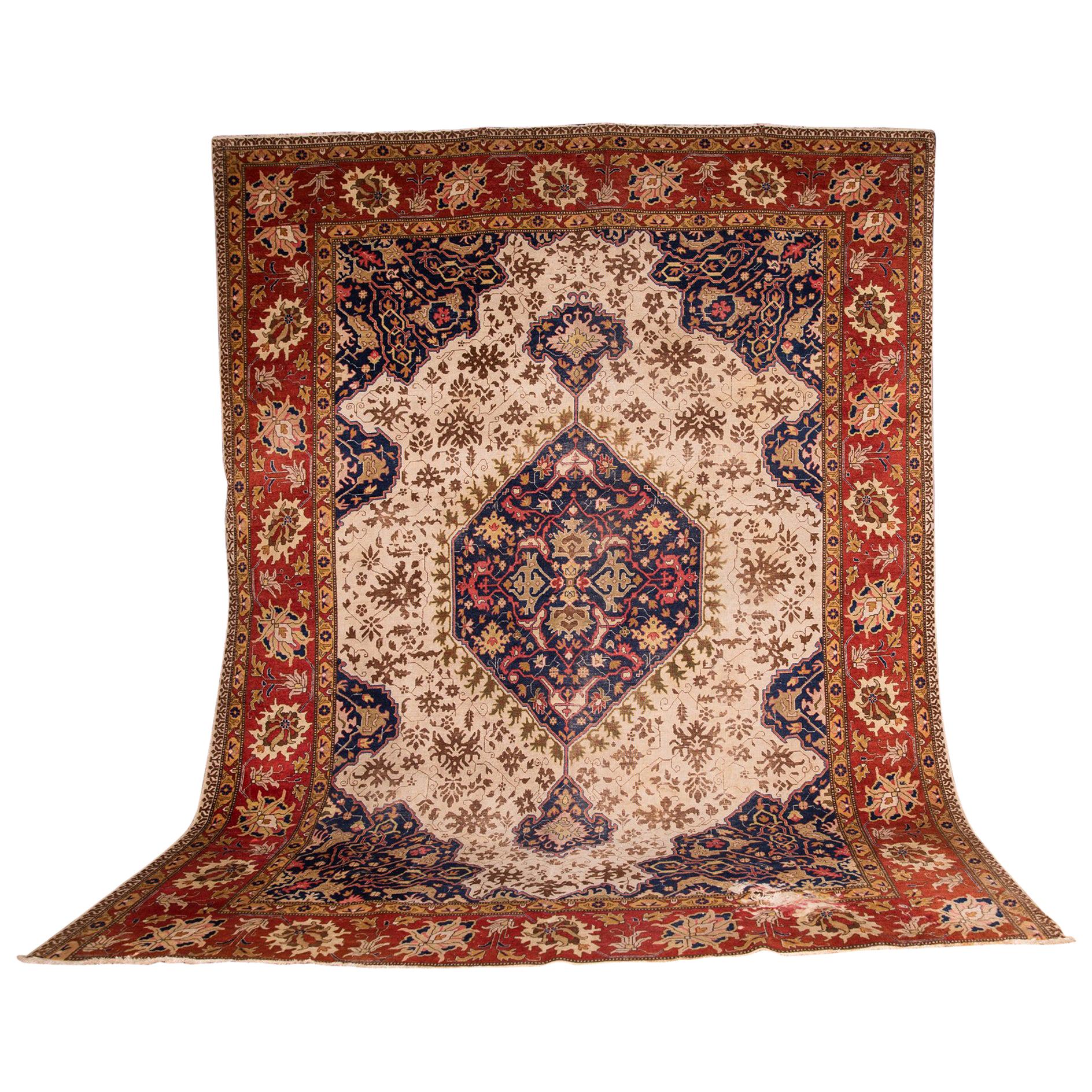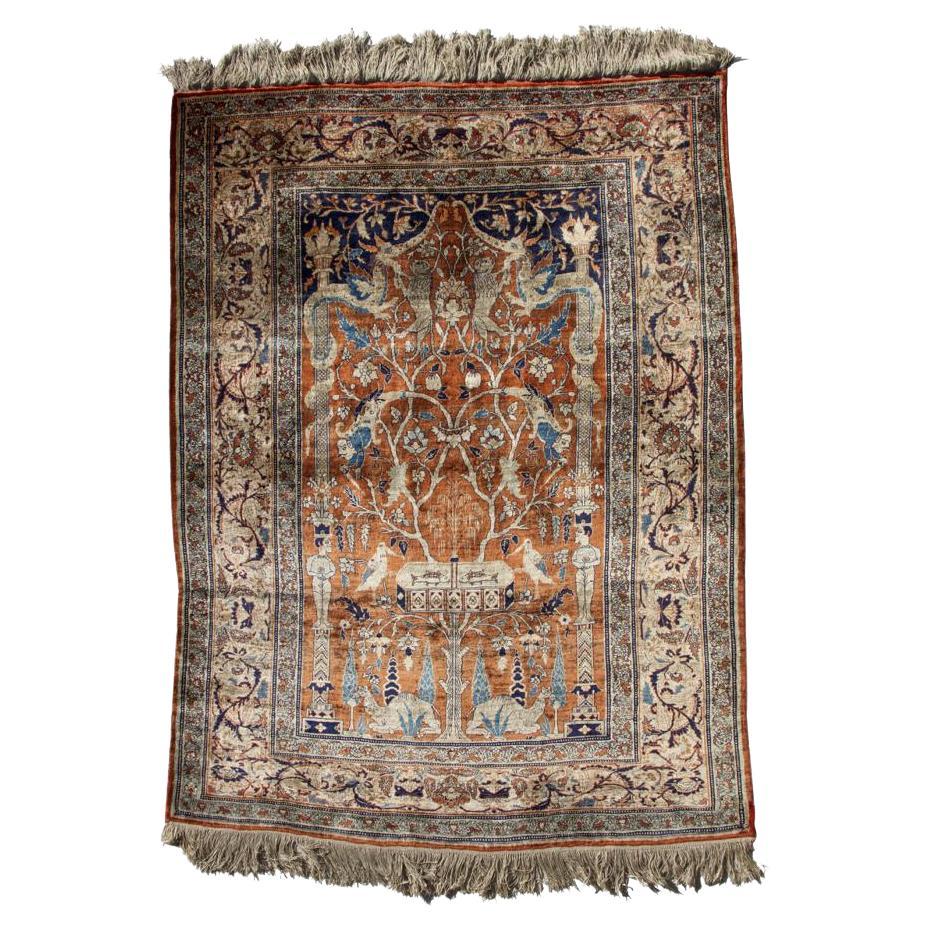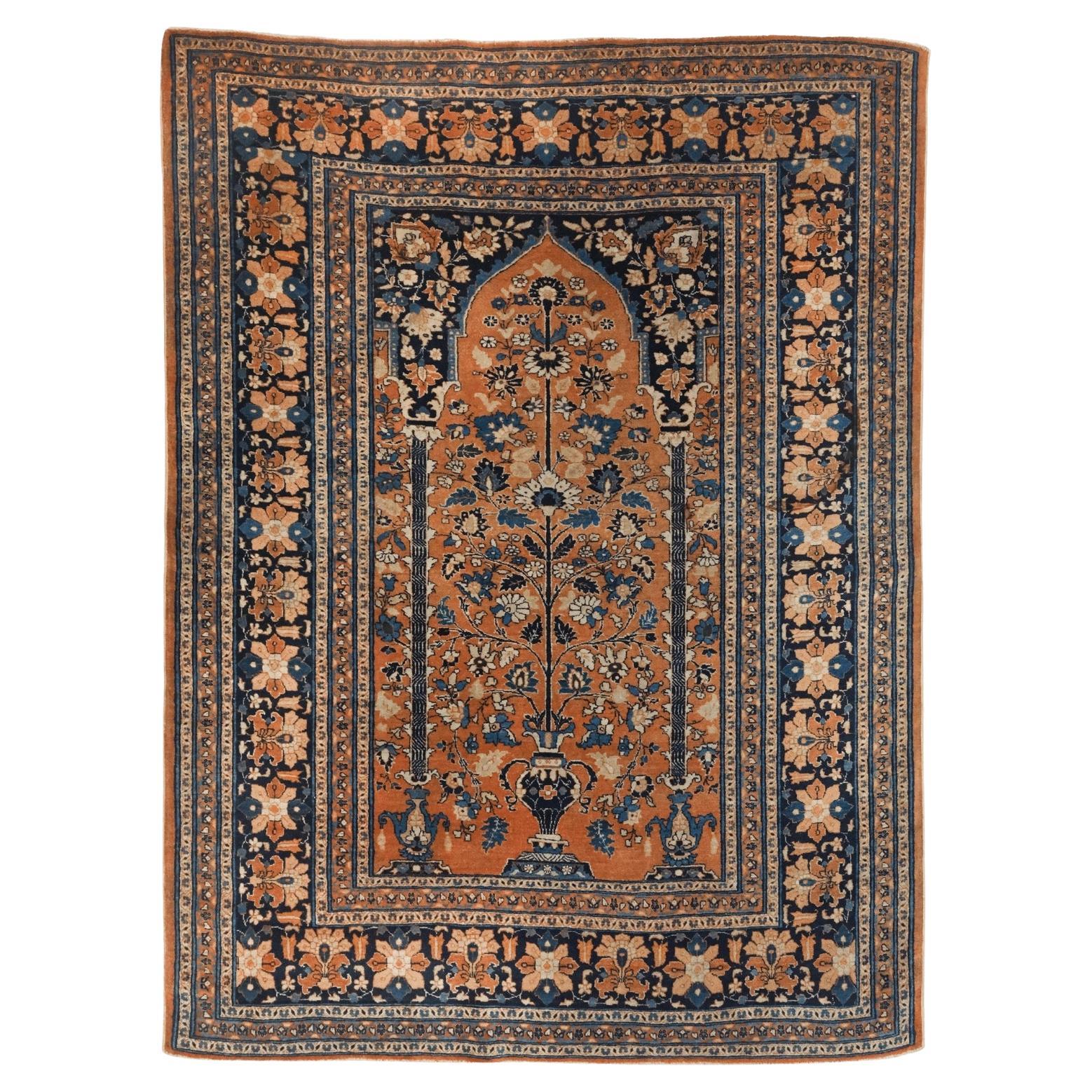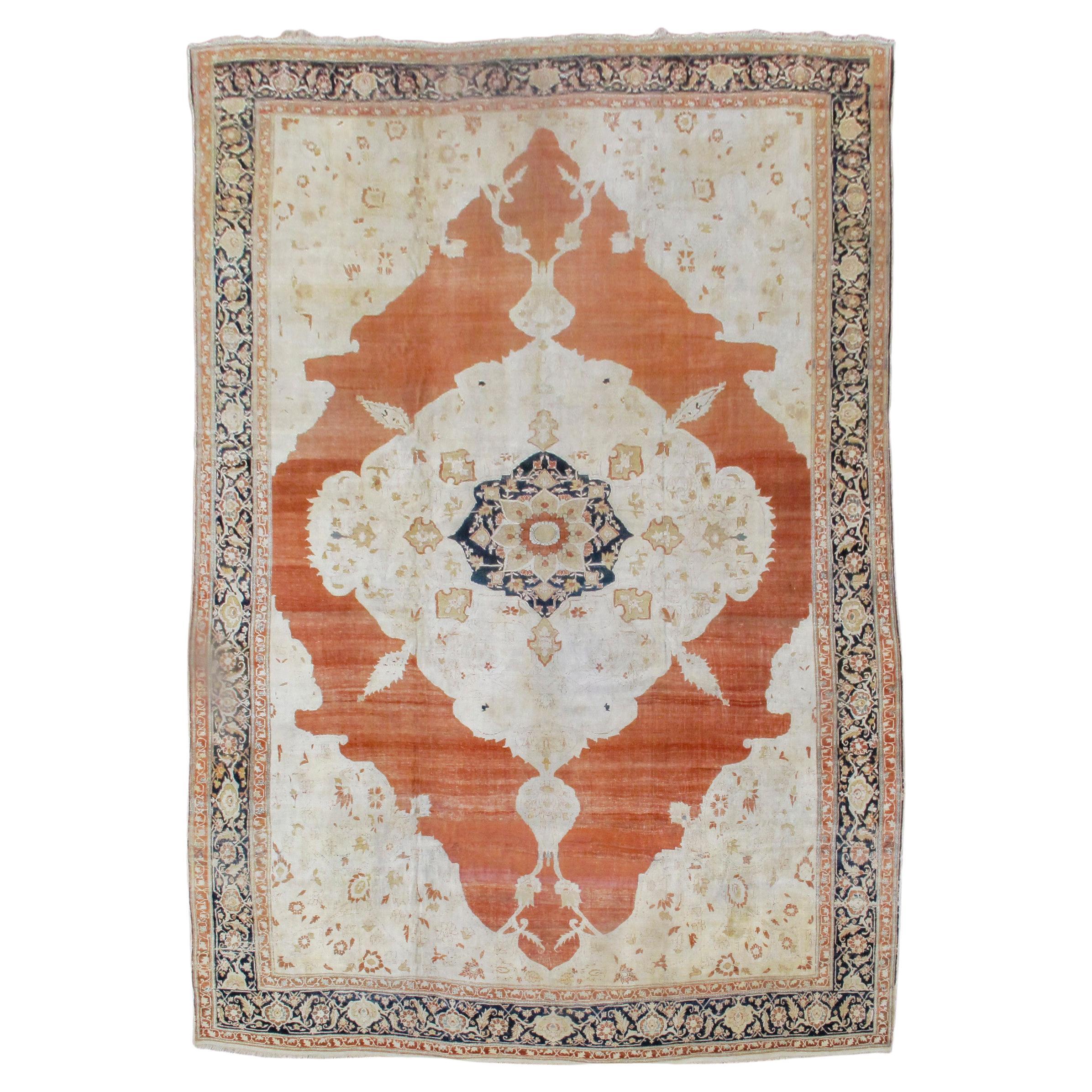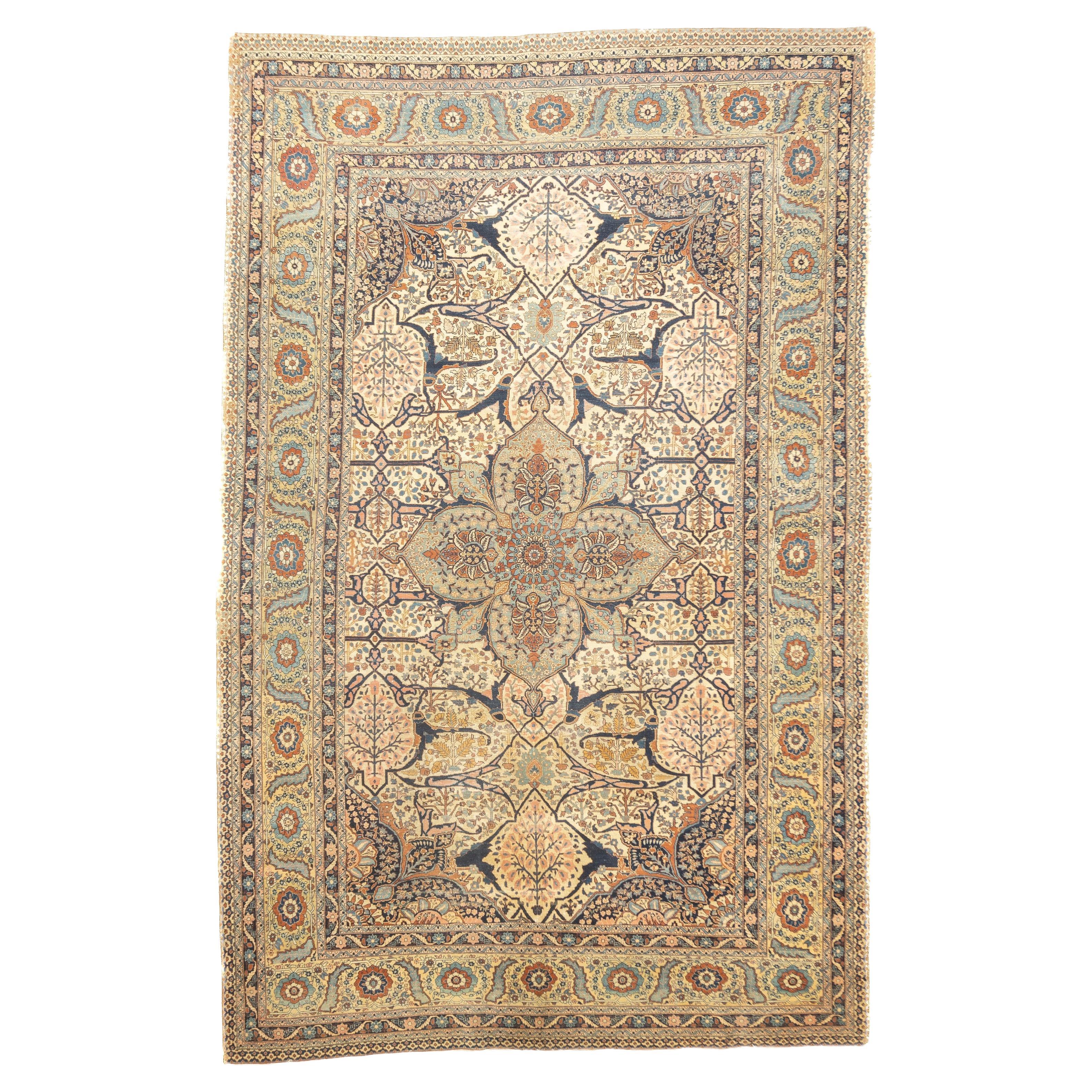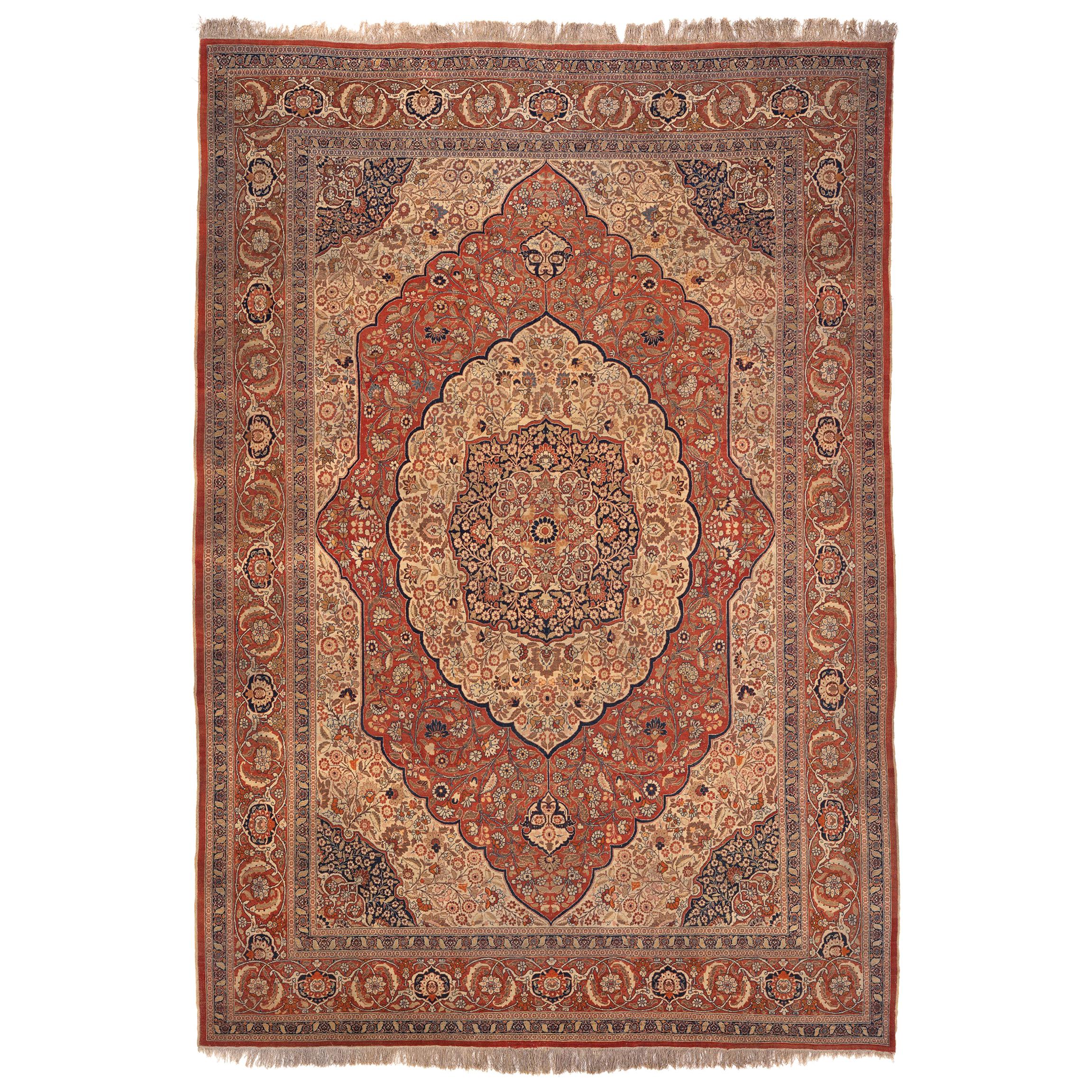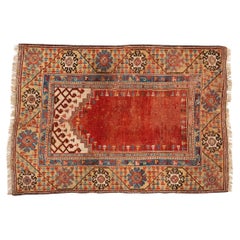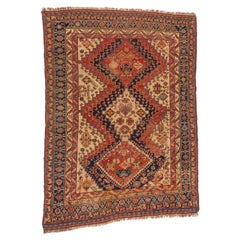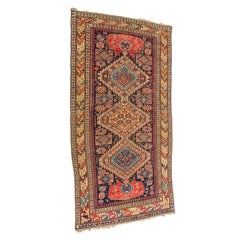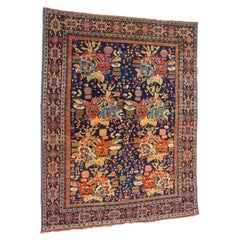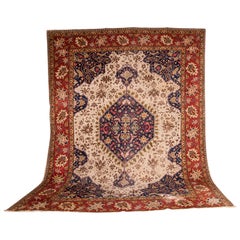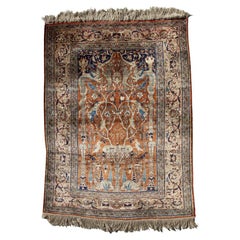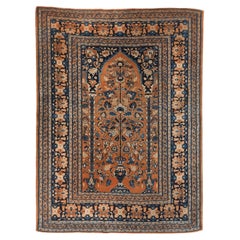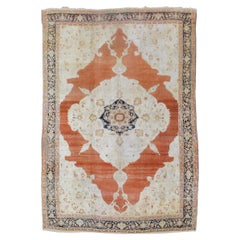Items Similar to Hard to Find Rich oversize TABRIZ PRAYER RUG ANTIQUE , SHORT TERM REDUCTION
Want more images or videos?
Request additional images or videos from the seller
1 of 9
Hard to Find Rich oversize TABRIZ PRAYER RUG ANTIQUE , SHORT TERM REDUCTION
$2,400
£1,809.61
€2,093.07
CA$3,395.50
A$3,701.84
CHF 1,955.98
MX$45,523.94
NOK 24,321.05
SEK 22,895.05
DKK 15,625.18
About the Item
Tabriz Prayer Rug circa 1900
4.1 feet x 5.8
Acquired from an Istanbul dealer
A strange mystery exists. Why are the vast majority of prayer rugs on the market from the Caucasus? We have never been able to solve this. The population in Persia is much greater and prayer rugs are ubiquitous throughout both countries. Persia holds 7 times the population of the wider Caucasus.
At all events, it is wonderful to observe the refined traditions of Tabriz weaving in a prayer rug format, with its elegance and grace-- and in a size and of sufficient strength to be a versatile decorative item for various places in the home ! This rug is solid and and with light care in a moderate wear area will last indefinetely , very usuable .
This piece is fundamentally sound and strong, usuable , though it has a horizontal worn area across the upper half . Unsurprisingly, the owner’s hands and head touched this area in regular prayer. This wear in our opinion, adds to the personality of the rug, which again is not distressed. We do not deal in shabby chic ……because, well, we don’t think shabby is chic. But no offense to those who do, good luck to them.
This piece has great character. To our eyes its overall appeal is enhanced by a slightly faded and minimally worn appearance. It looks old and distinguished.
Along with Isfahan and Kashan, Tabriz has historically been a center for amongst the most refined, highest knots per square inch, formal city and court carpets. The Tabriz weaving tradition has produced male designers of fame, and its name has been well known by western consumers for well over a century and a half .
The design of this piece harks back to the glories of Tabriz during the golden age of weaving during the Safavid Dynastic period, in the 16th and 17th centuries.
The graceful tree of life underneath the Mihrab is delicately woven in the manner of an urban carpet. It is sharply etched as are the side pillars. The mantel above the Mihrab is equally fine and intricate. The soft blues, greens and greys combine beautifully – against the quite unusual rust color. This may have been achieved by combing walnut shells to madder root in the die vat, with an addition of yellow flower petals.
It was very likely a special commission by a prominent individual and no doubt a deeply personal possession.
This rug is ideal for light medium wear indefinitely, in a den, TV room, or on a large wall – where its impact artistically, would project an historical feel of “Arabiana” to the décor.
This rare size and pedigreed rug is on short term reduction to coincide with our launch on 1st Dibs . Fair market value at " low retail price" is approx $4,800 .
- Dimensions:Width: 49 in (124.46 cm)Length: 70 in (177.8 cm)
- Materials and Techniques:Wool,Woven
- Place of Origin:
- Period:
- Date of Manufacture:circa 1900
- Condition:Wear consistent with age and use. Strong and sound enough to be used as a decorative item in a moderate wear environment .
- Seller Location:WYNNUM, AU
- Reference Number:Seller: FAC4014 1141stDibs: LU7409231394152
About the Seller
No Reviews Yet
Vetted Professional Seller
Every seller passes strict standards for authenticity and reliability
1stDibs seller since 2022
- ShippingRetrieving quote...Shipping from: WYNNUM, Australia
- Return Policy
Authenticity Guarantee
In the unlikely event there’s an issue with an item’s authenticity, contact us within 1 year for a full refund. DetailsMoney-Back Guarantee
If your item is not as described, is damaged in transit, or does not arrive, contact us within 7 days for a full refund. Details24-Hour Cancellation
You have a 24-hour grace period in which to reconsider your purchase, with no questions asked.Vetted Professional Sellers
Our world-class sellers must adhere to strict standards for service and quality, maintaining the integrity of our listings.Price-Match Guarantee
If you find that a seller listed the same item for a lower price elsewhere, we’ll match it.Trusted Global Delivery
Our best-in-class carrier network provides specialized shipping options worldwide, including custom delivery.More From This Seller
View AllAntique Melas Turkish Prayer Rug
Located in WYNNUM, QLD
This is admittedly a collector’s piece, for a connoisseur. Melas rugs became known and appreciated in Europe as early as 1700, though its history of weaving goes back at least severa...
Category
Antique Early 19th Century Turkish Turkish Rugs
Materials
Wool
Unusually Fine Qashgai'i 1870 Antique Tribal rug short term reduction
Located in WYNNUM, QLD
Qashgai circa 1870-80
Qashgai, UNUSUALLY FINE ANTIQUE TRIBAL PIECE circa 1870 - 1880
3 x 5 ft
Acquired from a French dealer
The Qashgai Federation...
Category
Antique 1870s Persian Persian Rugs
Materials
Wool
Antique 1880 Shirvan Caucasian investment carpet . rare, excellent condition
Located in WYNNUM, QLD
From a Philadelphia Collector
This is a very robust member of the esteemed, and increasingly rare 19th century Afstaka “family”. It is slightly longer and wider than many exam...
Category
Antique 1870s Azerbaijani Caucasian Rugs
Materials
Wool
Antique 19th century Afshar , Perfect condition , Plush
Located in WYNNUM, QLD
From a Boston Collector.
Remarkably Creative.
This is another of our small stock of Afshar collectibles which astonish as to their artistic form. This example was recently acquired from a Boston collector’s estate. The wool, very soft, is of excellent quality and the weave very fine, the rug in superior condition.
Boston Antique carpet expert Michael Grogan declared it as one of the very finest and most original Afshar rugs he had ever seen.
This piece was recently used along with two others in a lecture series which pondered the question of likely influence of tribal (and arguably other Persian e,g, Montasham Kashan) rugs on the development of Western 20th century painting.
The abrupt break with traditional forms by a gifted female weaver in a remote location and in the throes of a nomadic life, considering her circumstances, is awe inspiring.
The wide and in cases unusual colors deployed (note the dark browns probably achieved with walnut shells in the dye vat...
Category
Antique 1890s Persian Persian Rugs
Materials
Wool
Classic Antique 1870 Ferahan Sarouk -Intense Design Virtues
Located in WYNNUM, QLD
From an Australian Collector
Ferahan Sarouk carpets produced around the wider Arak (formerly Sultanabad) area from about 1850-1910 earned a deserved re...
Category
Antique 1870s Persian Persian Rugs
Materials
Wool
$6,320 Sale Price
36% Off
Antique Long Gendje Caucasian Prayer Rug
Located in WYNNUM, QLD
An unusually long prayer rug – and comparatively rare Gendje – in good condition. Above average centre field variation of colour and a particularly lively top Mihrab area to place in...
Category
Antique 1880s Caucasian Caucasian Rugs
Materials
Wool
You May Also Like
Antique 19th Century Large Carpet Tabriz Rug wool hand knotted
Located in Berlin, DE
Rare, large Tabriz carpet. Size: 380 cm x 300 cm.
Category
Antique 19th Century Egyptian Islamic Persian Rugs
Materials
Wool
Antique Silk Tabriz Prayer Rug, Northwest Persia.
Located in Point Richmond, CA
Antique Silk Tabriz Prayer Rug, Northwest Persia. A high quality pictorial and directional design. This rug is a unique interpretation of the tr...
Category
Antique 1890s Persian Tabriz Persian Rugs
Materials
Silk
$16,000 Sale Price
38% Off
Late of 19th Century Antique Hadji Jalili Tabriz Rug
Located in Sultanahmet, 34
Late of 19th Century Antique Hadji Jalili Tabriz Rug
A breathtaking example of Persian artistry, this antique Hadji Jalili rug from Tabriz features a refined Tree of Life rising fro...
Category
Antique Late 19th Century Persian Persian Rugs
Materials
Wool
Large Antique Persian Tabriz Carpet, Mid-19th Century
Located in San Francisco, CA
Antique Persian Tabriz Rug, Mid-19th Century
Additional Information:
Dimensions: 14'8" W x 18'0" L
Origin: Persia
Period: Mid-19th Century
Rug ID: 19241
Category
Antique Mid-19th Century Persian Persian Rugs
Materials
Wool
Antique Persian Haji Jalili Tabriz Rug 7'10'' x 12'2''
Located in New York, NY
Antique Persian Haji Jalili Tabriz Rug 7'10'' x 12'2''. The well-woven to finely knotted 1890 to 1910 pieces woven in the eponymous workshop or its copyists, in Tabriz, in formats ra...
Category
Antique Late 19th Century Persian Persian Rugs
Materials
Wool, Cotton
Late 19th Century Persian Tabriz Rug
Located in New York, NY
Persia, circa 1890
Measures: 15'2" x 10'4" (462 x 315 cm)
Handwoven.
Category
Antique Late 19th Century Persian Tabriz Persian Rugs
Materials
Wool
More Ways To Browse
Vintage Two Tiered Glass Coffee Table
18th Spanish Table
1960 Plastic Chair
1960s Danish Desk
19th Century Red Glass
Antique Side Chairs With Cane Seats
Antique Tea Trays
Antique Wood Brackets
Art Nouveau Blue Glass
Bathroom Vanity Midcentury
Blue And White Porcelain Pots
Brass Drink Table
Bunny Williams Home
Burl Wood Entry Table
Cantilever Chrome Chair Vintage
Catalan Modernism
Champagne Glass Sets
Clear Decanter
